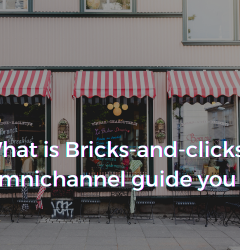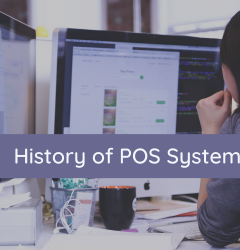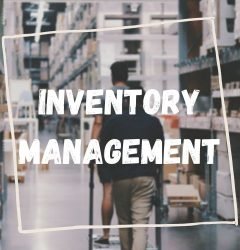16 Mar
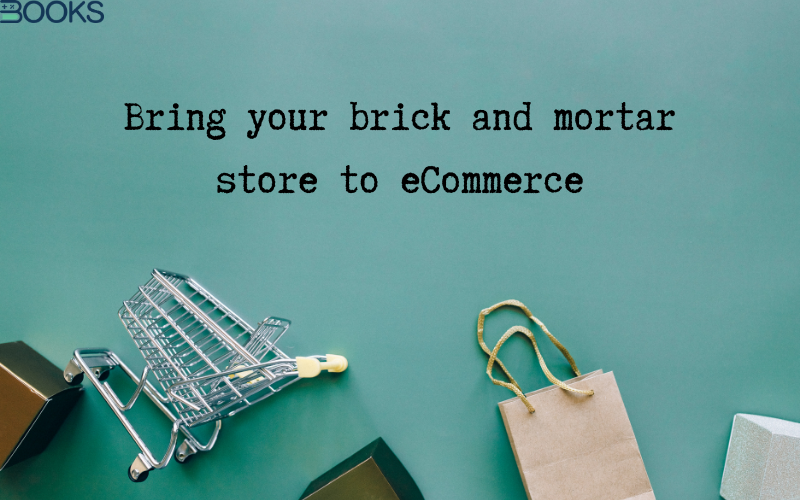
Bringing your brick and mortar to eCommerce online helps you in various cases, such as short-term benefits or long-term benefits. Short-term benefits means it keeps you selling your products while maintaining a proper social distancing and fulfilling their needs.
In the long term, with the help of eCommerce, you can keep your business running. As many stores are closed down because of shoppers moving to online business. Therefore, the ecommerce platforms like Woocommerce, shopify, amazon, etc. make the transactions happen smoothly and easily.
As an example, you have BooksPOS. They have their own simple ways to make you move into over one online ecommerce platform easy with a single inventory. Further, you have many other features as well.
Table of Contents
6 Reasons Moving Your Brick-and-Mortar to eCommerce Online Makes Sense Right Now

Innovation has changed a ton of things, including retail. On account of the web, individuals can remain at home and do their shopping. Rather than considering it to be a danger to your brick and mortar store, you can make yours a half and half store.
Here are a couple of reasons why you should make this move.
1. The COVID-19 Pandemic Has Changed Everything
Individuals will in any case shop in-store post-COVID-19. They will build up the habit of shopping on the web this lockdown season. So while they’ll actually go out to look for things after the pandemic, customers will be more than happy with purchasing things on the web.
If you don’t move your brick and mortar to eCommerce, you have the possibility of missing up this recent development.
2. Rent
The expense of dealing with an actual store is costly, in any event, for small business. A few agreements may cause that you use the facilities for a year or more. Along these lines, it doesn’t make any difference if the business isn’t making a profit.
3. Reduce Losses
When retailers can’t sell their goods, they either return them or lower their costs to for a sale. Their costs increment and benefit goes down. Another way a retailer may lose sales is if they’re unavailable and their competitor has that same item.
Bringing brick and mortar to eCommerce makes it simple to hold your customers when you don’t have the item they need. You can with little of an effort get the item from another person and resell it.
4. Lower Costs and Boost Your Delivery Speed
Online customers need the opportunity to choose the cost and speed of conveyance. They need free and quick conveyance simultaneously. Though, in the event that they need to pick between free conveyance and quick conveyance, they’d go for quick conveyance, all things considered.
Huge commercial centers like Amazon offer free same-day delivering in many urban areas. At the point when smaller brands attempt to compete, it influences their income since they’re not taking all things together areas. Thus, satisfaction is increasingly slower costly. As an independent business in your city you can convey that very day and for nothing as well, adequately competing larger brands inside your city.
5. Oversee Location and Capacity Limitations
With a brick and mortar store, you’re confronted with limits that may incorporate gear, space, or staffing. This may prompt delay and low efficiency in extraordinary shopping seasons like Black Friday and Cyber Monday.
An actual retail location needs staff to deal for certain capacities like:
To decrease the stress on a brick and mortar store, you’ll need various outlets. That doesn’t come cheap. Yet, bringing brick and mortar to eCommerce online can serve many urban communities while keeping up its stock in one area.
6. Get familiar with Your Customers

There’s a ton of things you can find out about your customers in the substance: in day by day life, we can normally tell by the manner in which somebody dresses if they’re somewhat of a trendy person, or if somebody’s somewhat elegant by the manner in which they talk. Furthermore, the manner in which customers actually interface with your products can give you a great deal of criticism as well.
Online information about your customers is unique, yet maybe much more important: the instincts you have about your customers IRL can be affirmed or disproven, evaluated and investigated to help you make your contribution significantly really engaging. Simply be certain you’re assembling and using this information morally!
The 11 Building Blocks for Moving Your Brick and Mortar to eCommerce Online

Before you sell on the web, you’ll need to set a solid establishment. Since you as of now have an actual store, you need to discover the sort of individuals that utilization the products you sell. At the point when you know your optimal customer, different advances will be easy to follow.
Use the accompanying strides to lay your preparation.
1. Build up Your User Persona
You need to perceive who you offer to or who purchases from you. Since you as of now have a business, your essential customers are individuals who as of now purchase from your actual store. You simply need to profile them.
Moreover, you need to know the promoting or informing channels that draw in these customers. Knowing where your customers are coming from causes you realize how to market to them.
Start your excursion online by characterizing who purchases from you, that is, a purchaser persona.
A persona encourages you answer addresses like:
- How significant is my item or administration to my customers?
- Who’s my ideal customer?
- How do I expect that my ideal customer should carry on?
- How do my present customers carry on?
- In what topographical area do individuals use my products?
- What are the requirements and assumptions for my customers?
- What are my present customers’ trouble spots or frustrations?
- Is my item an occasional one?
To put it plainly, it explains who you’ll focus in your missions.
Remember that your end-customers probably won’t be the purchasers or leaders. Kids, for example, may like your toys, yet their folks or watchmen are the leaders. You may get a more intricate circumstance where the influence is unique in relation to both the purchaser and the end-customer.
Along these lines, when you’re portraying your customer, make certain to focus on the individual with the cash and the person who gives orders.
2. Pick the Right Platform or Software
Whenever you’ve recognized your optimal crowd, try to pick a POS System that offers you online integration.
Assuming your image as of now has a site, you need to discover a web-based business platform that works with it. Furthermore, if this online business instrument can associate you to a POS system, that is far better. Assuming your internet business platforms integrating with POS software, you’re on the web and the stores can use a consistent checkout system with unified inventory.
However, that you don’t have a site, check if your actual store’s POS arrangement integrates with any eCommerce platforms or omnichannel. Now and again, interfacing with a coordinated web-based business stage matches up your present stock with your online store. Subsequently making it simpler to oversee the two channels.
A portion of these reconciliations may incorporate POS arrangements like BooksPOS. To choose which POS to use, you may initially need to know:
- The all out cost
- How simple it is to introduce and use
- What sort of safety and consistence system accompanies it
- If it’s adaptable to plan
- How many products you can transfer per time
- The estimating of the eCommerce platforms, web host, and area name
- If it accompanies added charges,
- Its versatility
- Responsiveness on versatile and different gadgets
- How well it can assist you with accomplishing your ideal plan
- Customer uphold
- Technical backing, and that’s only the tip of the iceberg.
Whenever you’ve recognized your optimal stage, you can proceed with your space or domain name.
3. Pick Your Domain Name
Moving your business online resembles changing your store’s area. In this way, you need to direct your customers toward your new store.
You can hold your present image name on the off chance that you need to fabricate brand mindfulness for your physical business. But, on the off chance that you plan to rebrand your store, you may need it to be SEO-accommodating and appealing to customers.
You need to make it simple for customer to perceive your store. In this way, pick a name that is easy to recollect.
On the off chance that it’s simple for individuals to incorrectly spell your space name, you should purchase the incorrectly spelled options as well. At that point, divert those areas to the genuine one.
4. Pick the Products to Display Online
On the off chance that your actual store sells a great deal of items, you’ll must be vital in the manner in which you show them on the web. Smooth out your products by picking those with the greatest levels of popularity. Even more along these lines, the items you decide to begin with need to interest a bigger crowd.
You can likewise build your odds of achievement by loading your store with items that perform well in your city or with your crowd. Be certain that the products you show in your online store are easy to source, store, and boat. It doesn’t help that customers purchase your item on the web and can’t get them as guaranteed.
5. Screen Your Competitors
Do some exploration to discover what other online stores in your specialty are doing. Look at their valuing, which ought to incorporate assessment, administration expenses, dispatching charges, whatever other thing that goes into the absolute expense of the item.
Discover how they set their site and their offering systems to know which items they publicize the most. Try not to be irritated if you can’t contend with their valuing. Perhaps with the worth you offer as well.
You can rival:
- Higher quality items
- Better customer help
- Faster dispatching
The reason for noticing your rivals is to advise your limited time and business techniques, not to duplicate them. Duplicating your rivals aimlessly can be unfortunate for your business.
6. Compose Custom Page Titles and Meta Descriptions
Assuming you intend to move your brick and mortar to eCommerce online rapidly, you probably won’t have sufficient opportunity to appropriately depict every item. Furthermore, it is anything but an interaction you need to surge. Notwithstanding, you can with little of a stretch to think of meta depictions and titles to put things into action.
Your meta depiction outlines your page that web search tools frequently show in indexed lists. In HTML, it’s a 160 character bit that gives your guests a thought of what is the issue here. This technique for depicting the page other than singular items makes it simple to transfer more items.
Your meta depiction must:
- Be exceptional from the depiction of your different pages
- Use the catchphrases that the page targets
- Read normally
- Use a functioning tone
- Compel pursuers to click
- Straightforwardly apply to that page
- Not be nasty
Your meta watch words, and meta portrayal don’t directly affect Google positioning. Though, it improves your CTR (active visitor clicking percentage), which eventually influences your positioning.
7. Take Pictures of Your Inventory
Purchasers need to see and feel what they’re purchasing more often than not. Though, you can help your clients feel like they aren’t missing anything by showing them every one point of every item. 75% of online customers rely upon item photographs to settle on purchasing choices.
Feature your items with excellent pictures. Using the first photographs of your item helps your SEO better than stock photographs. With a white foundation, you can use a camera or a decent cell phone to accomplish an expert looking photo. You could then utilize a photograph of proofreader to consummate your picture.
You can use models if your items are worn. Else, you can request your dependable customers to take pictures from the items they purchased.
8. Decide Your Shipping Costs
With an online store, comes the obligation of getting the items to the customer. You could decide to send the things yourself or use outsider administrations that will store, bundle, and boat for your sake.
Purchasers like straightforwardness, so it puts them off if all the cost changes at checkout on account of covered up expenses. Online dealers have a few techniques to decrease deserted truck, which incorporates:
- Displaying delivering charges (with charges, handling charges, and different costs)
- Offer limited or free delivery for purchasers to spend more
Use the measurement and weight measurements that are famous in the customer’s area.
9. Pick Your Payment Methods
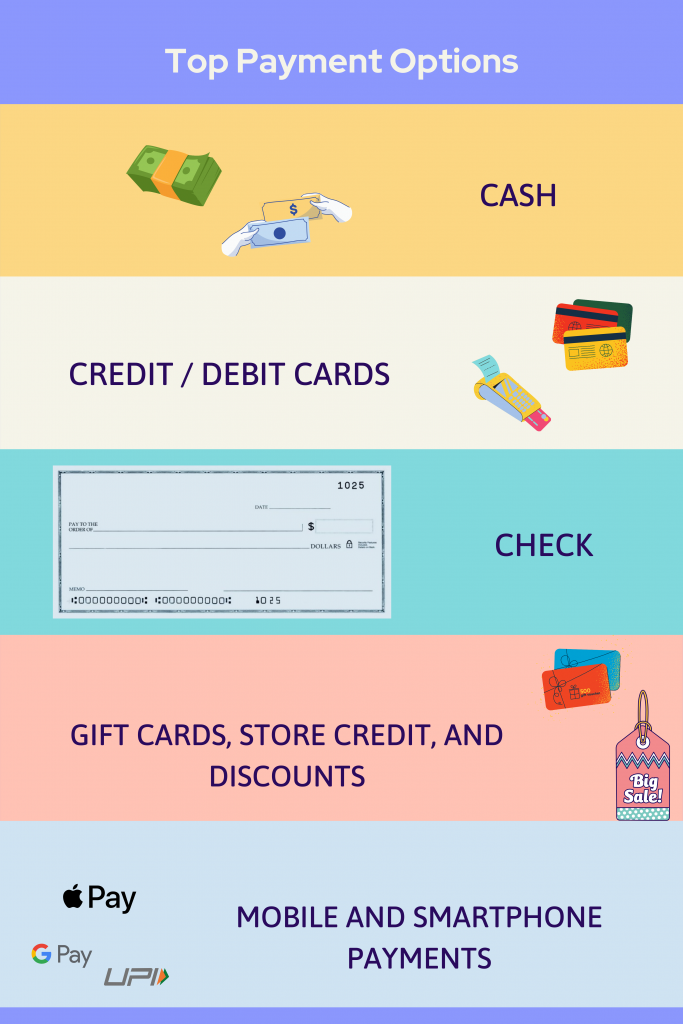
While picking an installment technique, you need to consider which is generally acknowledged, simple to set up, and helpful to use. It ought to effectively integrate with your online store and sync with your actual store’s stock and checkout. Integrate at any rate two payment processors to allow your customers to pick their retail payment, if conceivable. Using a trader record or payment specialist co-ops (PSPs) would help here.
PSPs like PayPal, Stripe, and others, handle all parts of sending and getting installments and take a concurred rate for installment preparing. Most purchasers trust PayPal because it eliminates the danger of their monetary data falling into some unacceptable hands. Along these lines, you should make it one of your installment choices. Which installment passage should you use for your web-based business store?, here are our top proposals:
You increment your customer’ readiness to purchase by 54% when you add PayPal as a payment choice. This conduct comes off on the non-clients of PayPal too when they probably won’t use PayPal. Nearly 60% of PayPal customers have halted an exchange because PayPal wasn’t in the installment choice.
You can likewise use an in-store POS that connects to an eCommerce platform. It’ll deal with your stock updates, installments, and duties from your on the web and actual stores all the while.
10. Deal with Your Security and Tax Details
Before you dispatch your online store, ensure you figure out any security and assessment gives that may emerge. Security is a need for online purchasers. You owe it to your customers to shield their data from information breaks. Adding a SSL endorsement is basically here.
Nonetheless, you can use an assortment of consistence programming to dodge charge issues. Some consistence programming arrangements robotize estimations, charge filings, and exceptions for your store.
11. Make Your Shipping and Refund Policy
Use your delivery and discount strategy to assemble associations with your customers. This training is significantly more significant if your brick and mortar store isn’t notable to purchasers. Agreeable transportation and discount arrangements help you fabricate trust in your expected purchasers. Show straightforwardness in your business by sharing all the significant data that purchasers need to think about your image and items.
At the point when you send messages to your customers, incorporate this data as connections alongside a FAQs interface as well. Purchasers would prefer not to feel forced or stayed with items that they don’t need. Thus, a few merchants give around 20 to 30 days to make it simple for customers to bring items back.
A few brands have a Return Request highlight that permits customers to get return delivering marks. It additionally shows them on the off chance that they’re still inside the bring time back. Some different stores use reusable eco-accommodating boxes that permit the customer to return items with a similar box.
Enhance for SEO and Engagement

Bringing brick and mortar to eCommerce will go in vain if you don’t focus on the SEO and engagement of your website. Whenever you’ve dealt with every one foundation, it’s an ideal opportunity to dispatch your store and enhance for SEO. Great SEO content draws in guests to your store, anyway you may profit better on the off chance that you start with inbound promoting. Here’s the way you can use inbound showcasing to drive SEO for your item,
- Building content
- Engaging with customers via web-based media, and
- Writing SEO-driven item depictions
- Follow the accompanying strides to upgrade your store.
1. Pick a Website Design for Your Brand
To bring your brick and mortar to eCommerce, you need your web composition to be steady with your physical image. It doesn’t need to be gaudy, particularly in case you’re not in style and plan, but the application should be practical.
You can pick an online business stage or a host that offers adjustable store layouts. Or you can use a specialist to assist you with it. Whatever your decision, guarantee that you focus on the customer experience.
Use a straightforward route to stay away from a jumbled landing page. The adaptability you get from various internet business stages differ, so ensure you see how they work and if it’s a fit for you.
Around 87% of customers look for items online before they purchase, so it’s essential to enhance your website for versatile responsiveness. Upgrading your site for versatile and work area improves transformations for both new and returning site guests.
2. Lift Conversion Rates with Your Design
Straightforward web architecture with simple route is the major factor to 76 percent of customers. They need the capacity to rapidly discover what they need with the snap of a catch. In addition, using route causes you to keep your landing page slick and cleaned up. You can additionally tidy up your pages with white or negative spaces. That way, your customers aren’t overpowered by the measure of writings and components on your site.
It’s essential to be predictable with your image, shading, text styles, and pictures on the off chance that you need your customers to see you as an expert. Individuals say, “Don’t pass judgment flippantly.” But inside 90 seconds of their experience with others or anything, they’ve made up their psyches. Between 62 to 90 percent of their judgment is from shading alone.
Utilize sharp tones to stand out to what you need them to see and dull tones to decrease interruption in certain territories. A model is an obvious source of inspiration button that connects with customers on your site.
3. Focus on Your Product Page
For web-based business, your item pages get the most visits, so putting an excess of asset in the landing page rather than the item page may be counterproductive. In any case, you need to test things around here. Your landing page, notwithstanding, should give your customers a vibe of what is the issue here.
Your meta depiction was valuable for pulling in rush hour gridlock to your site, however your guests will connect better with an itemized item page. Assuming you need significantly more natural traffic, utilizing the correct watchwords on your item pages will help. That is the reason you need to give close consideration to your item depictions. You need to give your customers’ enough data to settle on their purchasing choice simple.
Use genuine item photographs of the greatest quality. Visuals mostly convert better, so utilize a video that shows how your items work to help customers see the advantages they can get from your item.
Besides, you can flaunt your purchasers’ declarations, audits, and evaluations so your guests can see accounts of individuals who appreciate and use items they purchased from your store. Although it very well may entice to show just great surveys, showing the negative ones also gives a more regular standpoint. Make sure your item page shows:
- Shipping and Return Information
- Links to your delivery and merchandise exchange
- Descriptions of your delivery and merchandise exchange
- Size manager for wearable items
Whenever you’ve constructed your landing page and item page, fabricate brand partiality by drawing in with your clients through tests, websites, or news content.
4. Search engine optimization Never Stops
Improving for SEO isn’t a for the last time action, it’s a consistent interaction. Content drives web based business sites as it draws in your customers. Also, if you work effectively, they’d continue to come for additional. You can:
- Add standards to your image page
- FAQs to drive traffic from comparable inquiries on web indexes
- Short depictions for class pages
Consider adding inquiries to your FAQ list as you experience addresses that identify with your items.
Make Brand Awareness
In the wake of dealing with inbound showcasing, you need to ensure your guests draw in with your items. You can do this from various perspectives, including:
- Mailing customers who made a buy
- Motivating them to draw in with your missions
- Sending markdown coupons to guests who deserted trucks at checkout
The explanation behind brand mindfulness is to build trust in your image. Over the long run, individuals will in general distinguish items dependent on their image’s name. At the point when somebody checks something on the web, you may hear “I Googled it.”
Track Results and Make Improvements
You can utilize Google Search Console (GSC) or other following apparatuses like SEMrush to improve your store’s presentation by social occasion execution information and using it to improve your selling exercises.
In particular, causes you measure your store’s traffic and execution. You will see which catchphrases are liable for bringing the most visits, what item pages individuals are visiting, how long they spend on those pages and the sky is the limit from there.
SEMrush additionally shows you how you contrast with your rivals and what catchphrases have the most potential to win your site some SERP Features. Information is a companion here. So you can depend on the information you get to from your site and your rivals to graph your development systems.
Bottom Line
If you are a brick and mortar store and want all your activities online, then this will be a great help for you. On ecommerce platforms make a wider way to sell your products because no more geological boundaries going to bother you. And in the time of Covid 19, many buyers don’t want to come out of the house so, having an online business helps you to offer products to them as well.
BooksPOS lets you integrate the omnichannel stores with a single inventory. Bring your brick and mortar to eCommerce with no hustle. Manage all your stores on a single system while we ensure you 24×7 customer support.
